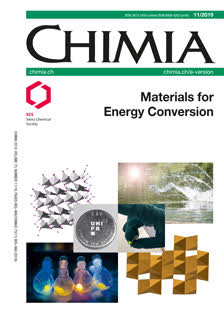Hole and Protonic Polarons in Perovskites
DOI:
https://doi.org/10.2533/chimia.2019.936PMID:
31753075Keywords:
Electrochemistry, Energy storage, Hydrogen, Meyer-neldel rule, Polaron, ProtonAbstract
Electric charge transport is an essential process for all electrical and electrochemical energy systems, including inanimate and animate matter. In this issue on materials for energy conversion, we compare and discuss the role of electron holes and protons as charge carriers in solids. Specifically we outline how the temperature or thermal bath affect the charge carrier concentration and mobility for some metal oxides with the perovskite structure. The frequent observation that the conductivity becomes independent of the activation energy at the isokinetic temperature, known as the Meyer-Neldel rule, is an important aspect of our interpretation of the physical mechanism of conduction by polaron hopping.Downloads
Published
2019-11-01
Issue
Section
Scientific Articles
License
Copyright (c) 2019 Swiss Chemical Society

This work is licensed under a Creative Commons Attribution-NonCommercial 4.0 International License.
How to Cite
[1]
A. Braun, Q. Chen, A. Yelon, Chimia 2019, 73, 936, DOI: 10.2533/chimia.2019.936.







